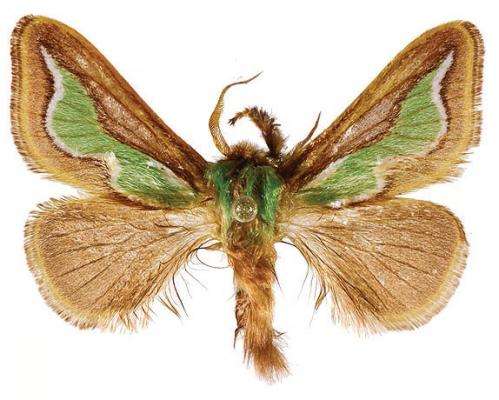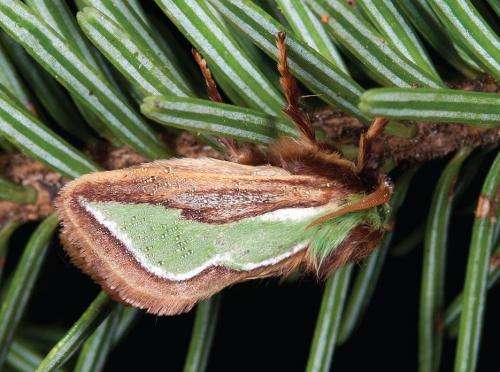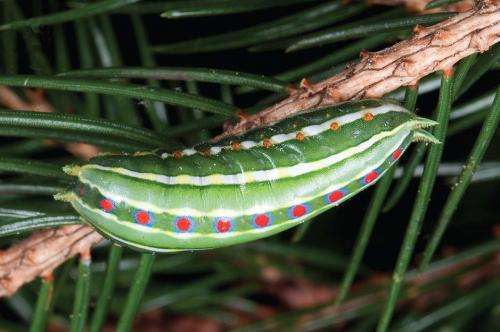Green flame moths: Scientists discover two new Limacodidae species from China and Taiwan

The representatives of the Limacodidae moth family are widely known as slug moths due to the resemblance of their stunningly colored caterpillars to slug species. Within this popular family the Parasa undulata group is perhaps one of the most intriguing, due to the beautiful green wing pattern typical for those species. In a recent revision, published in the open access journal Zookeys, scientists describe two new species from the group and provide a first record of a conifer-feeding caterpillar.
The two new species, Parasa viridiflamma and Parasa minwangi described from China and Taiwan both have the distinguishable green pattern typical for the group. They have a wingspan of averagely around 2 – 2.5 cm and can be seen mainly in mid-elevations of mountains. The resemblance of the wing pattern of P. viridiflamma to mystical green flames has also inspired its name, derived from the Latin words viridis (green) and flamma (fire).
The revision of this group in Taiwan and China, compiled by Shipher Wu, National Taiwan University and Weichun Chang, Council of Agriculture, Taiwan, contains another intriguing discovery. The scientists provide the first record of a caterpillar from the group feeding exclusively on pine trees, Picea morrisonicola, in Taiwan.
-

This image shows an adult male Parasa pygmy perching on a pine tree. Credit: Shipher Wu -

This image shows a beautifully colored mature Parasa pygmy instar feedings on hostplant, Picea morrisonicola. Credit: Shipher Wu
"This case represents the first record of conifer-feeding behavior in this family as well as the first specialist herbivore in the genus. Meanwhile, the background match between Picea leaves and larval colouration is shared with other Picea-feeding insects. This phenomenon is worth further investigation in the aspect of convergent evolution of crypsis, or camouflaging, associated with a particular plant," explains Shipher Wu, one of the authors.
More information: Wu S, Chang W (2013) Review of the Parasa undulata (Cai, 1983) species group with the first conifer-feeding larva for Limacodidae and descriptions of two new species from China and Taiwan (Lepidoptera, Limacodidae). ZooKeys 345: 29. DOI: 10.3897/zookeys.345.6179
Journal information: ZooKeys
Provided by Pensoft Publishers





















